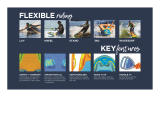2 3
PREMATURE INFANT USE
Before using this child restraint for preterm or low birth weight
infants, you must read and follow the guidelines in this section.
According to the U.S. National Highway Traffic Safety
Administration, a properly installed child restraint reduces the
risk of death by over 70% for infants involved in crashes. Federal
Motor Vehicle Safety Standard (FMVSS) 213 establishes design
and dynamic performance requirements for child restraint
systems. However, the standard has no minimum weight limit
and does not address the special medical needs of preterm or
low birth weight infants. To ensure that preterm and low birth
weight infants are transported safely, the guidelines published
by the American Academy of Pediatrics (AAP) in Pediatrics
2009;123:1424–1429 must be followed.
All children should ride rear-facing in the vehicle as long as
possible. Preterm and low birth weight infants are at additional
risk of breathing difficulties and heart problems when placed
in a child restraint. Evenflo requires that the evaluation
recommended by the AAP be conducted for all infants born
earlier than 37 weeks and all newborn infants who weigh
less than 5 lb at birth before their first car trip to check for
breathing difficulties or heart rate problems when traveling in a
rear-facing child restraint.
The AAP recommends that appropriate hospital staff observe
your infant in the child restraint for a period of 90 to 120
minutes or the duration of travel, whichever is longer. This
period of observation must be performed with the infant
properly positioned as described in these instructions and with
the child restraint placed at an angle that is approved for use
in the vehicle. The hospital staff will check for any breathing
difficulties or heart rate problems. Your child’s pediatrician will
let you know if there are any special considerations for travel.
The number of trips and the duration of time the infant is
seated in the child restraint should be minimized. A caregiver
should ride in the back seat to monitor the infant during travel.
PREMATURE INFANT USE - continued
You can learn more about the AAP’s recommendations
for observation of newborns and the guidelines for safe
transportation of preterm and low birth weight infants, as well
as other resources for parents and medical professionals, at
https://www.healthychildren.org/english/safety-prevention/on-
the-go/Pages/default.aspx
General Warnings
• Child restraints should be used only for travel. Potential
adverse health effects from excessive use of infant child
restraints have been documented. You should limit
the time spent each day in a child restraint as much as
possible. You must NEVER use your child restraint as a
sleeping environment in the home. NEVER leave your
infant unattended in a child restraint in or out of the
vehicle.
• Failure to follow installation instructions can result in
your child striking the vehicle’s interior during a sudden
stop or crash. Serious injury or death may result. These
instructions and the instructions in your vehicle owner’s
manual must be followed carefully. If there is a conflict
between the two, the vehicle owner’s manual regarding
child restraint installation must be followed.
• This child restraint MUST ALWAYS face the rear
of the vehicle. Serious injury or death can occur if used
forward-facing.
• NEVER leave child unattended.
• DO NOT use child restraint if it is damaged, broken,
or missing parts.
• DO NOT use this restraint if it has been involved in a
crash. It must be replaced.
• DO NOT attach additional padding, toys or other devices
not made by Evenflo, or described in these instructions,
to the child restraint. Items not tested with the child
restraint could injure the child.
• Be sure that the handle is firmly locked in Position 1
(Carry) before lifting the child restraint
(see pages 16-17).
• This child restraint must be securely belted to the vehicle
at all times, even when unoccupied. An unsecured child
restraint may injure someone if a crash occurs.
Premature Infants
• DO NOT use this or any other child restraint with a
premature infant until after consulting your doctor.
Premature infants may have difficulty breathing when in
a sitting position.
WARNING
WARNING






















